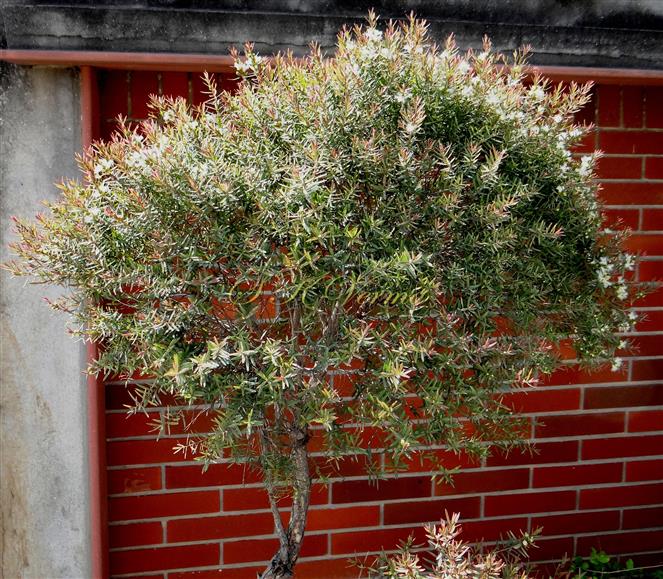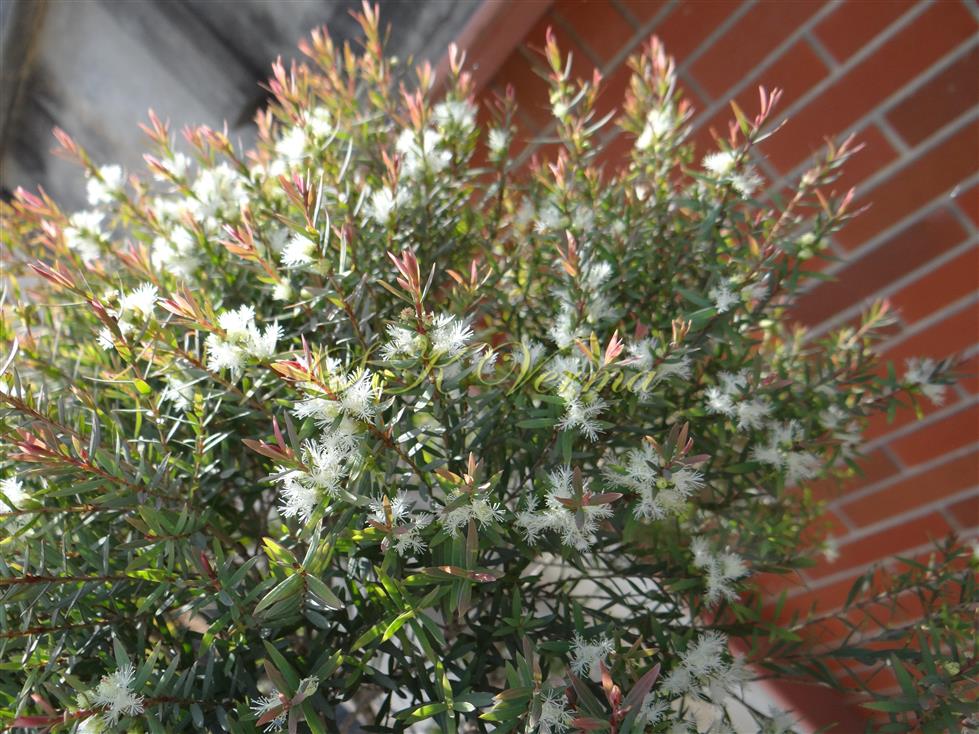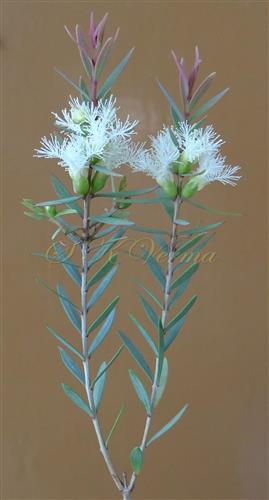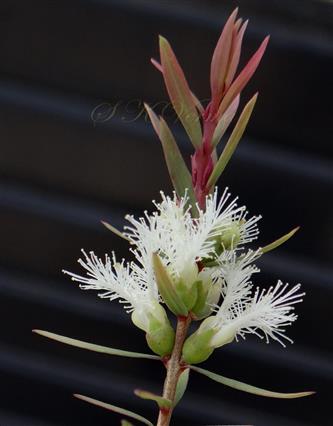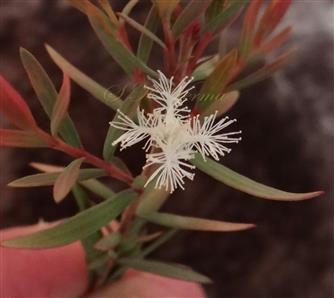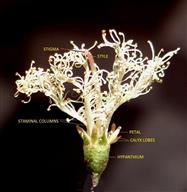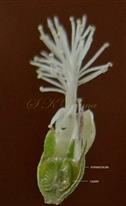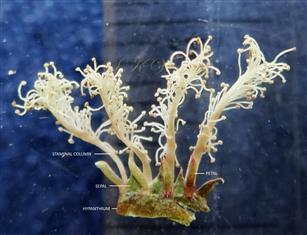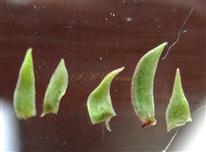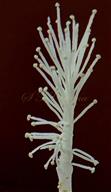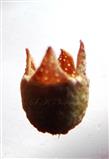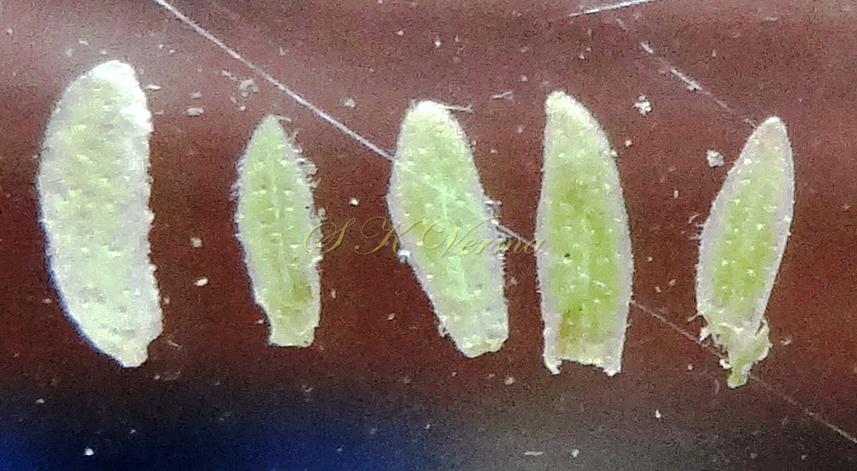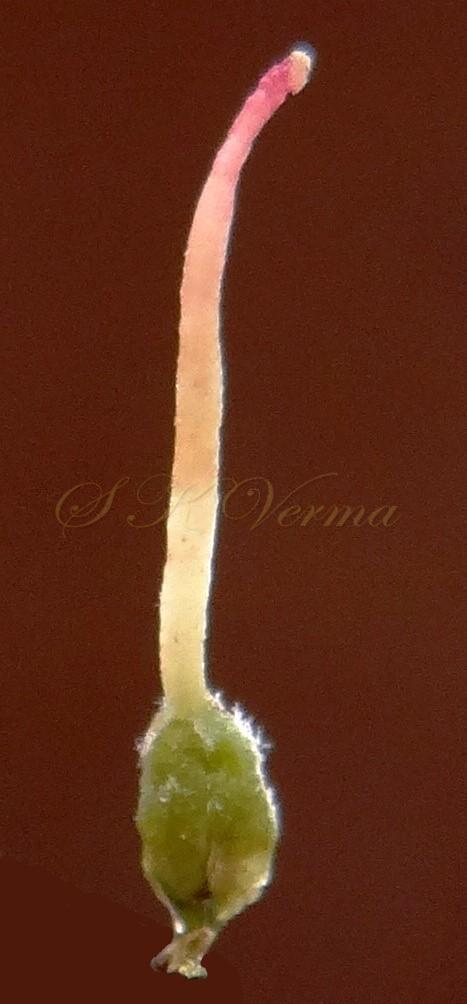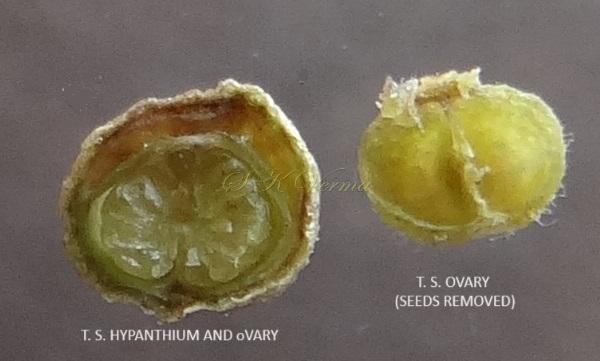MELALEUCA
Melaleuca
L., Mant. Pl. 1: 14. 1767; Syst. Nat. ed. 12. 2: 507,509. 1767; NSW Fl. Online (PlantNet); Fl. China @ eFloras.org 13: 328; Callistemon R. Br., Voy. Terra Australia 2: 547. 1814.
Trees or shrubs. Leaves alternate or opposite- decussate, petiolate or sessile; the leaf blade leathery, secondary veins basal and parallel to leaf axis or pinnate. Flowers bisexual or female sterile, 5-merous, white, yellowish, pink, red or mauve, arranged in spikes or heads and pseudo- terminal or lateral, the terminal bud usually growing on, occasionally aborting. Hypanthium subglobose or campanulate. Sepals 5, small, triangular to semicircular, caducous or persistent. Petals 5, free. Stamens numerous, greenish white, filaments basally connate into 5 bundles opposite to petals; anthers dorsifixed or versatile, thecae parallel, dehiscing longitudinally. Ovary slightly adnate to hypanthium, ovary half- inferior, 3-loculed, apex prominent, ovules numerous, erect; style linear or filiform; stigma simple, +/- enlarged, capitate. Capsule semiglobose to globose, only rarely exserted from fruiting hypanthium, apically dehiscing (loculicidal). Seeds obovoid- oblong to obovoid, testa thin.
382 species
Melaleuca lineariifolia
Melaleuca lineariifolia
Sm., Trans. Linn. Soc. London 3: 278. 1797; NSW Fl. online (PlantNet); M. hyssopifolia (Cav.) Dum. Cours., Bot. Cult. ed. 2, 5: 375. 1811; Myrtoleucodendron lineariifolium (Sm.) Kuntze, Revis. Gen. Pl. 1: 241. 1891; Ozandra hyssopifolia (Cav.) Raf., Autik. Bot. 148. 1840.
Shrubs or small tree to 10 m high (small sized plants observed used as ornamental plants), with papery bark, branched, branches subterete. Leaves alternate or opposite decussate, simple, exstipulate, sessile, narrow elliptic to linear-lanceolate, ca. 12 mm x 2 mm, narrowed at both ends, apex acute, margin entire, midrib and 2 marginal veins conspicuous, both surfaces glabrous and gland-dotted. Stem, branches and leaves reddish near apex. Flowers solitary axillary near apex giving false appearance of bottle brush. Flowers bisexual, actinomorphic, white, 1-1.2 cm x 1-1.2 cm, 3-8 in spikes; spikes terminal, small, 1-2 cm long, apex soon growing through the spikes; bracts leaf-like, one flower per bract; pedicels ca. 1 mm long. Hypanthium subglobose or campanulate, 2-2.25 mm long; calyx lobes 5 (or 4), 2-3 mm x 0.6-1 mm, unequal, deltoid, calyx gland-dotted. Petals 5 (or 4), inserted at margin of hypanthium, alternate with calyx lobes, 2-3 mm x 0.7-1 mm, obovate, obrhombic to broad-elliptic, pale-yellow or pale-green, gland-dotted. Stamens numerous, greenish white; filaments basally connate into 4 or 5 columns, each column with 60-70 stamens, column 8-10 mm long; free filaments 1-1.5 mm long; anthers very small, 0.2-0.25 mm, versatile or dorsifixed, thecae parallel, dehiscing longitudinally. Ovary slightly adnate to hypanthium, half-inferior, ca. 1 mm x 1 mm, slightly pubescent near apex, bilocular, axile placentation, ovules many; style 7-8 mm long; stigma capitate. Immature fruit a leathery capsule with persistent calyx, ca. 2 mm x 2.5 mm.
Mature capsules with seeds not observed.
Common Names: Flax-leaved Paperbark, Snow in Summer, Narrow-leaved Paperbark, Budjur
